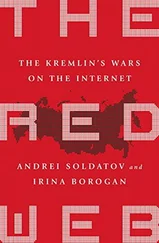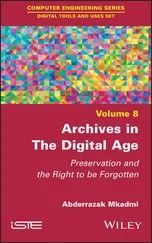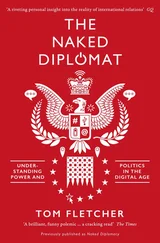Jared Cohen - The New Digital Age
Здесь есть возможность читать онлайн «Jared Cohen - The New Digital Age» весь текст электронной книги совершенно бесплатно (целиком полную версию без сокращений). В некоторых случаях можно слушать аудио, скачать через торрент в формате fb2 и присутствует краткое содержание. Жанр: Старинная литература, на английском языке. Описание произведения, (предисловие) а так же отзывы посетителей доступны на портале библиотеки ЛибКат.
- Название:The New Digital Age
- Автор:
- Жанр:
- Год:неизвестен
- ISBN:нет данных
- Рейтинг книги:5 / 5. Голосов: 1
-
Избранное:Добавить в избранное
- Отзывы:
-
Ваша оценка:
- 100
- 1
- 2
- 3
- 4
- 5
The New Digital Age: краткое содержание, описание и аннотация
Предлагаем к чтению аннотацию, описание, краткое содержание или предисловие (зависит от того, что написал сам автор книги «The New Digital Age»). Если вы не нашли необходимую информацию о книге — напишите в комментариях, мы постараемся отыскать её.
The New Digital Age — читать онлайн бесплатно полную книгу (весь текст) целиком
Ниже представлен текст книги, разбитый по страницам. Система сохранения места последней прочитанной страницы, позволяет с удобством читать онлайн бесплатно книгу «The New Digital Age», без необходимости каждый раз заново искать на чём Вы остановились. Поставьте закладку, и сможете в любой момент перейти на страницу, на которой закончили чтение.
Интервал:
Закладка:
1Feature extraction automatically identifies the presence, absence or status of important characteristics of a data set. In this case, key features might include the grade level of the writing, the frequency of emotionally charged words and the number of people cited in contexts, thereby indicating mentorship.
2The post, by the Internet research firm Renesys, displayed stunning data charts that showed the near-immediate disconnection of Egypt’s ISPs from the global network.
3There was one exception to this all-ISP block: Noor Group, which provided service to several prominent institutions like the Egyptian Stock Exchange and the Egyptian Credit Bureau, was left unrestricted until three days later.
4The Egyptian regime was notoriously harsh on its underground gay community; on one infamous occasion, the Cairo vice squad raided a floating nightclub called the Queen Boat and arrested fifty-five men, dozens of whom were convicted of debauchery and sent to prison.
CHAPTER 5
The Future of
Terrorism
As we’ve made clear, technology is an equal-opportunity enabler, providing powerful tools for people to use for their own ends—sometimes wonderfully constructive ends, but sometimes unimaginably destructive ones. The unavoidable truth is that connectivity benefits terrorists and violent extremists too; as it spreads, so will the risks. Future terrorist activity will include physical and virtual aspects, from recruitment to implementation. Terrorist groups will continue to kill thousands annually, by bombs or other means. This is all very bad news for the broader public, states that already have enough trouble protecting their homeland in the physical world, and companies that will be increasingly vulnerable.
And of course there remains the terrifying possibility that one of these groups will acquire a nuclear, chemical or biological weapon. Because of the developed world’s increasing dependence on its own connectedness—nearly every system we have is tied to a virtual network in some way—we’re acutely vulnerable to cyber terrorism in its various forms. That applies, of course, even in less-connected places, where the majority of terrorist attacks occur today. The technical skills of violent extremists will grow as they develop strategies for recruitment, training and execution in the virtual world, with the full understanding that their attacks will be more visible than ever before thanks to the increasing reach of global social-media networks.
But despite those gains, communication technologies also make terrorists far more vulnerable than they are today. For all the advantages that living in the virtual world give terrorists (small cells all over the world, destructive activities that are harder to trace), they still have to live physically (eat, be sheltered, be in a physical space from which they use their phones and computers), and that’s precisely what makes them more vulnerable in the new digital age. Here we will explore how terrorists will split their time between the physical and virtual worlds and why despite some advantages gained, they will ultimately make more mistakes and implicate more people, making their violent business far more difficult.
New Reach, New Risks
That the Internet provides dangerous information for potential criminals and extremists is well known; less understood is how this access will evolve on a global scale in the future. Many of the populations coming online in the next decade are very young and live in restive areas, with limited economic opportunities and long histories of internal and external strife. It follows, then, that in some places, the advent of the new digital age will also mean an increase in violent activity fueled by the greater availability of technology. A strong indication that that process is under way will be the proliferation of sophisticated homemade explosive devices.
While traveling in Iraq in 2009, we were struck by the notion that it was far too easy to be a terrorist. An Army captain told us that one of the greatest shared fears among American troops on patrol was the hidden roadside IED (improvised explosive device). In the war’s early days, IEDs were expensive to produce and required special materials, but with time, bomb-making tools and accessible instructions were widely available to any potential insurgent. The IED of 2009 was cheaper and more innovative, designed to evade now-understood countermeasures with simple adaptations. A bomb with its trigger taped to a mobile phone set on “vibrate” could be detonated remotely by calling that number. (The Americans soon responded to this tactic by introducing jamming systems to cut off mobile communication, with limited success.) What was once a sophisticated and lucrative violent activity (earning insurgents thousands of dollars) had become routine, an option for anyone with a bit of initiative willing to be paid in cigarettes.
If an insurgent’s mobile-phone-triggered IED is now the equivalent of a high school science project, what does that tell us about the future? These “projects” are an unfortunate consequence of what the Android creator Andy Rubin describes as the “maker phenomenon” in technology, which outside the terrorism context is often applauded. “Citizens will more easily become their own manufacturers by piecing together versions of today’s products to make something that had previously been too hard for an ordinary citizen to build,” Rubin told us. The emerging “maker culture” around the world is producing an untold number of ingenious creations today—3-D printers are just the beginning—but as with most technology movements, there is a darker side to innovation.
The future homemade terror device will likely be a combination of “everyman” drones and mobile IEDs. Such drones could be purchased online or at a toy store; indeed, simple remote-control helicopters are already available. The AR.Drone quadricopter, built by Parrot, was one of the top-selling toys of the 2011–2012 Christmas season. These toys are already equipped with a camera and can be piloted by a smart phone. Imagine a more complicated version that uses a Wi-Fi connection it generates itself and that is fitted with a homemade bomb on its undercarriage, producing a whole new level of domestic terror that is just around the corner. The knowledge, resources and technical skills necessary to produce such a drone will certainly be available practically everywhere in the near future. The autonomous navigation capability we discussed previously will become generally available and embeddable on a chip, which will make it easier for terrorists and criminals to stage a drone-based attack without intervention. Improved destructive capacity in physical attacks is just one way the spread of technology will affect global terrorism. Cyber terrorism, of course, is another—the term itself dates back to the 1980s—and the threat will grow only graver. For our purposes, we’ll define cyber terrorism as politically or ideologically motivated attacks on information, user data or computer systems intended to result in violent outcomes. (There is some overlap in tactics between cyber terrorism and criminal hacking, but generally the motivations distinguish the two.)
It’s hard to imagine extremist groups operating out of caves in Tora Bora constituting a cyber threat, but as connectivity spreads throughout the world, even remote places will have reasonable network access and sophisticated mobile handsets. We have to assume that these groups will also acquire the technical skills necessary to launch cyber attacks. Those changes, and the fact that our own connectedness presents an endless number of potential targets for extremists, are not promising developments.
Consider some straightforward possibilities. If cyber terrorists successfully compromise the network security of a large bank, all of its customers’ data and money will be at risk. (Even calling in a threat, in the proper circumstances, could cause a run on the bank.) If cyber terrorists target a city’s transportation system, police data, stock market or electricity grid, they could bring the daily mechanics of the city to a halt.
Читать дальшеИнтервал:
Закладка:
Похожие книги на «The New Digital Age»
Представляем Вашему вниманию похожие книги на «The New Digital Age» списком для выбора. Мы отобрали схожую по названию и смыслу литературу в надежде предоставить читателям больше вариантов отыскать новые, интересные, ещё непрочитанные произведения.
Обсуждение, отзывы о книге «The New Digital Age» и просто собственные мнения читателей. Оставьте ваши комментарии, напишите, что Вы думаете о произведении, его смысле или главных героях. Укажите что конкретно понравилось, а что нет, и почему Вы так считаете.












